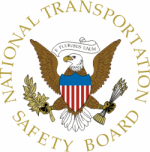Instructor And Student Injured When Fire Erupted During
Flight
 The NTSB has released a factual report in an incident which
injured a flight instructor and his student. The two experienced
one of the most harrowing things that could be experienced while
flying ... a fire in the cockpit. Fortunately, both people on board
survived the incident, but the airplane was destroyed.
The NTSB has released a factual report in an incident which
injured a flight instructor and his student. The two experienced
one of the most harrowing things that could be experienced while
flying ... a fire in the cockpit. Fortunately, both people on board
survived the incident, but the airplane was destroyed.
NTSB Identification: CEN10LA572
14 CFR Part 91: General Aviation
Accident occurred Tuesday, September 28, 2010 in Tulsa, OK
Aircraft: CESSNA 172RG, registration: N5145U
Injuries: 1 Serious, 1 Minor.
On September 28, 2010, at 1038 central daylight time, a Cessna
172RG, N5145U, registered to and operated by Spartan Aviation
Industries, Inc., was destroyed when a fire broke out in the engine
compartment while returning to the Richard Lloyd Jones, Jr.,
Airport (RVS), Tulsa, Oklahoma. The instructor pilot attempted a
forced landing and impacted terrain 2 miles west of the airport.
Visual meteorological conditions (VMC) prevailed at the time of the
accident. The instructional flight was being conducted under the
provisions of 14 Code of Federal Regulations (CFR) Part 91 without
a flight plan. The flight instructor was seriously injured, and the
certified flight instructor (CFI) candidate received minor
injuries. The local flight originated from RVS approximately
0930.
According to the flight instructor's accident report, the
landing gear was lowered only once during the flight when they
practiced slow flight in the landing configuration. They returned
to RVS and lowered the landing gear in preparation for landing. The
instructor wrote, “Within seconds of lowering the gear,
flames started pouring out from under the instrument panel and up
the front of the panel. The carpet on the floor also caught fire
quickly.” An emergency was declared, and then the radio
failed. The mixture control was pulled to idle cutoff, but the fuel
selector could not be turned off due to the flames. The cabin
filled with smoke, the instruments became unreadable, and the
pilots were having trouble breathing. The instructor opened his
(left) door, causing the airplane to yaw to the left, and he used
right rudder to compensate. The rudder pedals were “fully
covered in flames.” The instructor’s right foot was on
fire and his shoe was melting to his foot. The CFI candidate, who
was in the right seat, was able to remove the instructor’s
shoe but the instructor's calf was also on fire. In the ensuing
forced landing, the instructor was able to avoid power lines but
was unable to clear a fence. The airplane struck the fence and came
”to a stop suddenly.” Both occupants evacuated the
airplane. The CFI candidate's report corroborated the
instructor’s report.

Cessna 172 RG File Photo
According to the Federal Aviation Administration (FAA) inspector
who responded to the accident site, he found evidence that the
terminal lug on the hydraulic pump was improperly installed and had
shorted. There was no evidence that the exposed lug had been
properly covered. The inspector examined six other Cessna
172RG’s at the airport and found two airplanes had exposed
terminal lugs, three airplanes had a rubber boot (part number
MS25171-2S) installed to cover the lug, and only one airplane was
equipped with the proper cover (part number S1807-1). The inspector
also discovered that the installation procedures for the hydraulic
power package did not specifically mention the cover. Only the
Cessna 172RG Illustrated Parts Catalog depicted the correct and
proper installation.
 ANN's Daily Aero-Term (05.07.25): Terminal Radar Service Area
ANN's Daily Aero-Term (05.07.25): Terminal Radar Service Area ANN's Daily Aero-Linx (05.07.25)
ANN's Daily Aero-Linx (05.07.25) Classic Aero-TV: Anousheh Ansari -- The Woman Behind The Prize
Classic Aero-TV: Anousheh Ansari -- The Woman Behind The Prize NTSB Prelim: Bell 206B
NTSB Prelim: Bell 206B Airborne-NextGen 05.06.25: AF Uncrewed Fighters, Drones v Planes, Joby Crew Test
Airborne-NextGen 05.06.25: AF Uncrewed Fighters, Drones v Planes, Joby Crew Test




